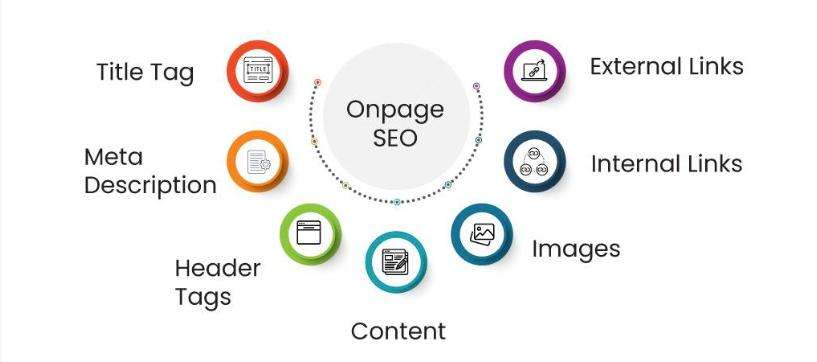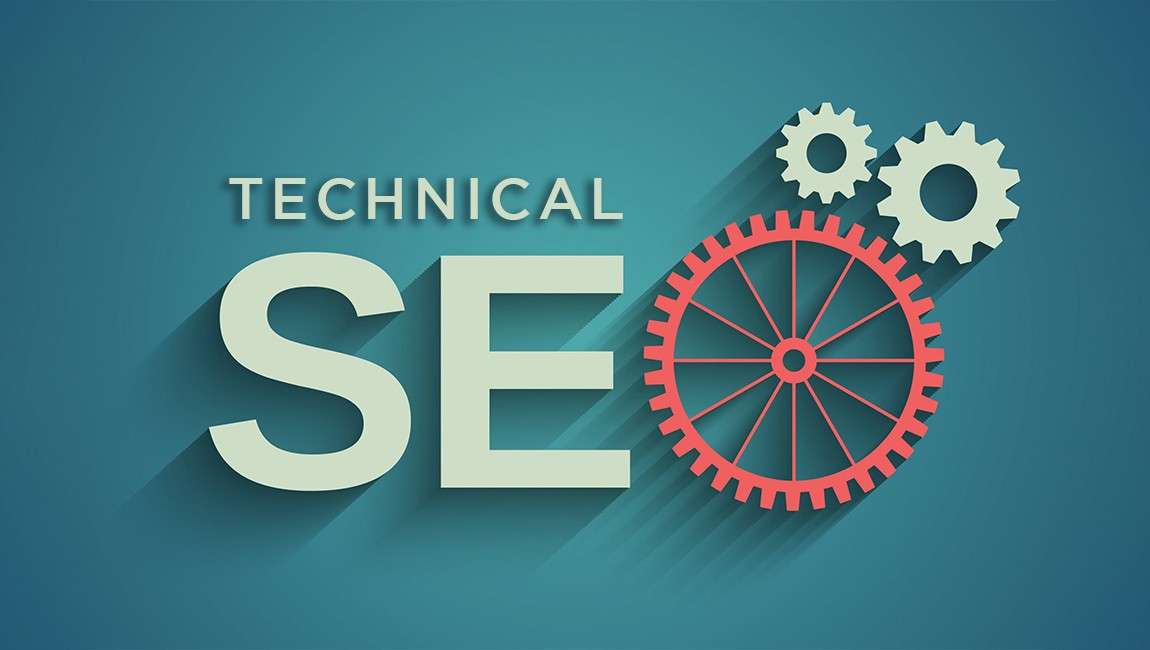Why SEO is Crucial for Your Dropshipping Success
The Challenge of Standing Out in a Saturated Market
Is your dropshipping store getting lost in a sea of competitors? With dropshipping becoming increasingly popular, standing out is tougher than ever. But effective SEO can make all the difference. By optimizing your store, you don’t just drive traffic—you attract targeted customers who are already looking for your products. In a crowded market, SEO is your edge.
What You’ll Learn
This guide will give you a clear roadmap to optimize your dropshipping store for higher rankings and more organic traffic.
Key benefits of strong SEO:
- Boost visibility and attract more targeted customers.
- Increase conversions by reaching the right audience.
We’ll cover:
- Keyword Research: Find the best keywords for your niche.
- On-Page SEO: Optimize product pages and content.
- Technical SEO: Ensure your site is fast and mobile-friendly.
- Content Marketing: Build authority and attract backlinks.
- Off-Page SEO: Strengthen your backlink profile.
With these strategies, you’ll stand out and achieve long-term success.
Keyword Research: The Foundation of Dropshipping SEO
Understanding Buyer Intent
 Are you targeting the right keywords for each stage of your customer’s journey? Understanding buyer intent is crucial. Not all keywords are created equal—some attract visitors who are just browsing, while others bring in ready-to-buy customers. By aligning your keywords with the informational, navigational, and transactional stages of the buyer’s journey, you can drive more qualified traffic to your store.
Are you targeting the right keywords for each stage of your customer’s journey? Understanding buyer intent is crucial. Not all keywords are created equal—some attract visitors who are just browsing, while others bring in ready-to-buy customers. By aligning your keywords with the informational, navigational, and transactional stages of the buyer’s journey, you can drive more qualified traffic to your store.
Tools and Techniques for Finding Profitable Keywords
Finding the right keywords can make or break your SEO strategy. Tools like Ahrefs, SEMrush, and Ubersuggest are essential for identifying profitable keywords. These tools allow you to analyze search volume, competition, and keyword difficulty to ensure you’re targeting the best opportunities.
| Tool | Features | Pricing | Pros | Cons |
|---|---|---|---|---|
| Ahrefs | Comprehensive keyword data | $$$ | Detailed competitor insights | Expensive for beginners |
| SEMrush | All-in-one marketing toolkit | $$ | Excellent for PPC analysis | Can be overwhelming for new users |
| Ubersuggest | Budget-friendly SEO tool | $ | Easy to use, affordable | Limited data compared to premium tools |
Long-Tail Keywords
Want to capture niche markets with low competition? Long-tail keywords are the key. These keywords are more specific, often with lower search volume, but they attract highly targeted visitors who are further along in the buying process.
Steps to find long-tail keywords:
- Use keyword tools to identify long-tail variations.
- Analyze your competitors’ content for long-tail opportunities.
- Focus on keywords that address specific customer needs.
Examples of effective long-tail keywords:
- “Affordable vegan leather wallets”
- “Best wireless earbuds for running”
- “Organic cotton baby clothes”
Competitor Analysis
Wondering how to stay ahead of the competition? Competitor analysis can help you reverse-engineer their SEO strategies. By analyzing their top-performing keywords, you can uncover gaps in your own strategy and find new opportunities.
Tools for competitor analysis:
- Ahrefs: Great for backlink and keyword analysis.
- SEMrush: Offers in-depth competitor insights.
- Moz: Good for tracking competitor rankings.
Key elements to analyze in competitor SEO:
- Top-ranking keywords and their search volumes.
- Content gaps where your competitors may be weak.
- Backlink profiles to identify link-building opportunities.
By mastering keyword research, you’ll lay a solid foundation for your dropshipping SEO strategy, ensuring your store ranks for the terms that matter most.
On-Page SEO Optimization: Crafting a Store that Ranks

Product Pages
Optimizing Product Titles
Are your product titles doing enough to drive clicks and rankings? A well-crafted product title isn’t just about being descriptive; it needs to be SEO-friendly while also enticing users to click. Use primary keywords early in the title, and keep it concise yet informative. For example, instead of “Stylish Leather Wallet for Men,” opt for “Men’s Genuine Leather Wallet – Slim, Stylish & Durable.”
Unique Product Descriptions
Struggling with duplicate content on your product pages? This is a common pitfall in dropshipping, where many stores use the same manufacturer descriptions. To stand out, create compelling, unique descriptions that not only describe the product but also engage the reader. Highlight the benefits, use your brand’s voice, and integrate keywords naturally.
Tips for writing unique product descriptions:
- Focus on the benefits rather than just the features.
- Use sensory language to make the product feel tangible.
- Incorporate storytelling to create a connection with the buyer.
Common pitfalls to avoid:
- Don’t simply copy and paste manufacturer descriptions.
- Avoid keyword stuffing—keep the text natural.
- Don’t ignore the emotional appeal; speak to the buyer’s desires.
User-Generated Content
Looking for an easy way to add fresh, keyword-rich content to your product pages? User-generated content like reviews and testimonials can boost your SEO while building trust with potential buyers. Encourage customers to leave detailed reviews, and make sure to integrate these into your product pages.
Category Pages
Why Category Pages Matter
Do you optimize your category pages as much as your product pages? These often-overlooked pages can have a significant impact on your SEO performance. A well-optimized category page can rank for broad keywords and guide users deeper into your site.
Elements of a well-optimized category page:
- Keyword-rich titles and headings.
- A concise, informative description that includes relevant keywords.
- Internal links to featured products and related categories.
Best practices for internal linking on category pages:
- Link to top-selling products within the category.
- Include links to related categories to keep users on your site longer.
- Use descriptive anchor text that reflects the target keywords.
Technical Elements
URL Structure
Is your URL structure optimized for both search engines and users? A clean, keyword-rich URL is not only good for SEO but also enhances user experience. Keep URLs short, descriptive, and consistent across your site.
Meta Tags Optimization
Want to improve your click-through rates (CTR)? Crafting compelling meta tags is key. Your meta description should be persuasive and keyword-optimized while your title tag needs to clearly convey what the page is about.
| Title Tag | Meta Description |
|---|---|
| “Buy Men’s Leather Wallets Online | Genuine, Stylish & Durable” |
Image Optimization
Are your images helping or hurting your page load times? Image optimization is crucial for maintaining a fast, SEO-friendly site. Use compressed images to reduce load times, and don’t forget to include alt texts with relevant keywords to capture image search traffic.
By focusing on these on-page SEO elements, you can create a dropshipping store that not only ranks higher but also provides a better user experience, leading to more sales.
Technical SEO: Ensuring Your Store is Crawled and Indexed Correctly
Crawlability and Indexability
 Is your store being fully crawled and indexed by search engines? If Google can’t find or properly index your pages, all your SEO efforts will go to waste. Ensuring your site is easily crawlable and indexable is the foundation of technical SEO.
Is your store being fully crawled and indexed by search engines? If Google can’t find or properly index your pages, all your SEO efforts will go to waste. Ensuring your site is easily crawlable and indexable is the foundation of technical SEO.
Sitemaps and Robots.txt
Want to guide search engines through your site? A well-structured XML sitemap tells Google exactly what pages to index, while a properly configured robots.txt file ensures that search engines avoid the parts of your site you don’t want to be crawled.
To optimize:
- Create an XML sitemap and submit it via Google Search Console.
- Use robots.txt to block non-essential pages (like admin or duplicate content).
Schema Markup
How can you make your store stand out in search results? Schema markup helps search engines understand your content better, enabling your store to show up with rich snippets—like product reviews or pricing—directly in search results.
Types of schema markup relevant to dropshipping stores:
- Product Schema: Displays product details like price, availability, and reviews.
- Breadcrumbs Schema: Helps Google understand the structure of your site.
- Review Schema: Shows customer ratings directly in search results.
Tools to generate and test schema markup:
- Google’s Structured Data Markup Helper: Easy tool to generate schema.
- Schema.org: Comprehensive guide to different types of schema markup.
- Google’s Rich Results Test: Tool to test how your markup displays in search results.
Canonical Tags
Struggling with duplicate content issues? If you’re selling similar products or using manufacturer descriptions, canonical tags can help you avoid SEO penalties by telling search engines which version of a page is the original.
When and how to use canonical tags:
- Use canonical tags when you have duplicate or similar content on different URLs.
- Always point the canonical tag to the preferred version of a page.
Examples of correct canonical tag usage:
- If you have the same product listed in different categories, use a canonical tag to point to the main product page.
- For pages with URL parameters (like sort or filter options), ensure they point to the base URL.
Page Speed Optimization
Did you know that page speed is directly linked to user experience and SEO rankings? A slow-loading site can not only frustrate users but also hurt your search engine rankings. Google has made it clear: speed matters.
Techniques to Improve Speed
Improving your site’s speed doesn’t have to be overwhelming. By focusing on a few key areas, you can significantly enhance your load times.
Step-by-step guide to improving page speed:
- Analyze your site with Google PageSpeed Insights to identify issues.
- Compress images without losing quality using tools like TinyPNG.
- Leverage browser caching to store frequently used resources locally on users’ devices.
- Minify CSS, JavaScript, and HTML to reduce file sizes.
- Use a content delivery network (CDN) to speed up content delivery.
List of recommended tools and plugins for speed optimization:
- Google PageSpeed Insights: For a detailed speed analysis.
- W3 Total Cache: Popular caching plugin for WordPress.
- Cloudflare: A widely-used CDN that also offers free services.
By focusing on these technical SEO elements, you’ll ensure that your dropshipping store is easily crawled and indexed by search engines, while also providing a fast, user-friendly experience that keeps visitors coming back.
Content Marketing: Building Authority and Driving Organic Traffic
Blogging for SEO
Topic Clusters and Pillar Content
How do you make your blog posts rank for more than just one keyword? The answer lies in creating topic clusters and pillar content. A pillar page is a comprehensive guide on a broad topic, while cluster content consists of related subtopics that link back to the pillar page. This structure helps Google understand the depth and breadth of your content, boosting your SEO.
Diagram: Structure of a Topic Cluster
This diagram represents the structure of a topic cluster where the pillar page is centrally linked to all the cluster content, and each cluster content page links back to the pillar page. This setup strengthens your site’s topical authority, making it easier to rank for a variety of related keywords.
Example: If your pillar content is about “Sustainable Fashion,” your cluster topics could include “Eco-Friendly Materials,” “How to Build a Sustainable Wardrobe,” and “The Impact of Fast Fashion on the Environment.”
This diagram visually reinforces the importance of linking related content together to create a strong SEO foundation for your blog.
Linkable Assets
Want to attract backlinks naturally? Create linkable assets—high-quality resources like guides, infographics, and case studies that others in your niche will want to link to. These assets not only drive traffic but also build your authority in the eyes of search engines.
Types of content that attract backlinks:
- Ultimate Guides: Comprehensive content that serves as a go-to resource.
- Infographics: Visually appealing and easy to share.
- Original Research: Data-driven content that provides unique insights.
Strategies for promoting linkable assets:
- Outreach to industry influencers and bloggers.
- Share your assets on social media and relevant forums.
- Guest post on other blogs, linking back to your asset.
User-Generated Content and Community Building
How can you keep your site content fresh without doing all the work yourself? User-generated content (UGC) like reviews, testimonials, and community discussions not only keep your site updated but also boost your SEO by adding keyword-rich content.
Methods to encourage user-generated content:
- Prompt customers to leave reviews by offering discounts or incentives.
- Create a forum or discussion area on your site where users can share tips and experiences.
- Highlight user testimonials prominently to encourage others to contribute.
Benefits of community engagement for SEO:
- Increases dwell time on your site, signaling quality to search engines.
- Creates a steady stream of fresh content that keeps your site relevant.
- Builds trust and loyalty among your customer base.
Leveraging Video Content
Why is video a must-have for your content strategy? Videos are incredibly engaging and can significantly boost your SEO when done right. YouTube SEO is particularly powerful, as YouTube is the second largest search engine after Google. By creating product demos, unboxing videos, and how-to guides, you can drive more traffic to your store.
YouTube SEO
To get the most out of your video content, optimize your YouTube videos just like you would your blog posts. This means using targeted keywords in your video titles, descriptions, and tags. Don’t forget to include a call-to-action that directs viewers to your store.
Tips for effective YouTube SEO:
- Use engaging thumbnails that capture attention.
- Include closed captions to make your videos accessible and improve SEO.
- Promote your videos on your website and social media to increase views.
By strategically implementing content marketing, you’ll not only drive more organic traffic but also establish your dropshipping store as an authority in your niche.
Off-Page SEO: Building a Strong Backlink Profile
Link Building Strategies for Dropshipping
Guest Posting
How do you secure high-quality backlinks from authoritative sites? Guest posting is one of the most effective strategies. By contributing valuable content to relevant blogs in your niche, you not only gain backlinks but also expose your store to a wider audience.
Steps for effective guest posting outreach:
- Identify blogs and websites in your niche that accept guest posts.
- Craft a personalized pitch that highlights the unique value you can offer.
- Follow up politely if you don’t receive a response within a week.
Common mistakes to avoid in guest posting:
- Avoid mass emailing; personalize each pitch.
- Don’t over-promote your products; focus on providing value.
- Ensure your guest post aligns with the tone and style of the host blog.
Influencer Outreach
Looking to amplify your brand’s reach and earn backlinks at the same time? Influencer outreach is a powerful method. Partnering with influencers who can review your products or feature them in their content can generate high-quality backlinks and social proof.
Tips for identifying and reaching out to influencers:
- Research influencers in your niche who align with your brand values.
- Engage with their content before pitching; this makes your outreach more authentic.
- Offer a mutually beneficial partnership, such as free products or affiliate commissions.
Examples of successful influencer collaborations:
- Product reviews that include a backlink to your store.
- Sponsored blog posts or social media shoutouts that drive traffic and boost SEO.
Broken Link Building
How can you reclaim lost link juice? Broken link building is a savvy way to turn dead links into opportunities. By identifying broken links on high-authority sites, you can offer your content as a replacement, earning a backlink in the process.
| Step | Action |
|---|---|
| 1 | Identify broken links on relevant sites using tools like Ahrefs or Check My Links. |
| 2 | Create or identify content on your site that fits the broken link. |
| 3 | Reach out to the webmaster with a polite suggestion to replace the broken link with your content. |
| 4 | Follow up if necessary, to ensure your link is added. |
Social Signals
The Role of Social Media in SEO
How does social media impact your SEO? While social signals themselves aren’t direct ranking factors, they play a significant role in boosting visibility and gaining backlinks. Platforms like Pinterest, Instagram, and Facebook can drive traffic to your site, which can lead to more shares, mentions, and backlinks.
Driving Traffic and Engagement
Looking to amplify your SEO efforts through social media? Engaging content that resonates with your audience can lead to increased traffic and improved rankings.
Best practices for social media posting to support SEO:
- Share high-quality content consistently to keep your audience engaged.
- Use relevant hashtags and keywords to increase the discoverability of your posts.
- Encourage user interaction through comments, shares, and likes.
Tools to schedule and track social media engagement:
- Buffer: For scheduling posts across multiple platforms.
- Hootsuite: To manage and analyze social media activity.
- Later: Perfect for visually planning your Instagram content.
By implementing these off-page SEO strategies, you can build a strong backlink profile that enhances your store’s authority and visibility, driving more organic traffic and improving your overall SEO performance.
Monitoring and Improving SEO Performance
Key Metrics to Track
Organic Traffic and Rankings
How do you measure the success of your SEO efforts? Tracking organic traffic and keyword rankings over time is essential. These metrics show you how well your content is performing in search engines and whether your strategy is driving the desired results.
| Tool | Features | Best For |
|---|---|---|
| Google Analytics | Tracks organic traffic, user behavior | Comprehensive site analysis |
| Google Search Console | Monitors keyword performance, crawl errors | Keyword tracking, technical SEO |
| Ahrefs | Tracks keyword rankings, backlinks | Competitive analysis, SEO monitoring |
| SEMrush | Keyword tracking, site audits | All-in-one SEO management |
Conversion Rate Optimization (CRO)
How can you turn more visitors into customers? Conversion Rate Optimization (CRO) uses SEO data to enhance user experience and increase conversions. It’s not just about bringing traffic; it’s about converting that traffic into sales.
Tips for optimizing conversion rates based on SEO insights:
- Analyze user behavior to identify drop-off points in your sales funnel.
- A/B test landing pages to determine what resonates best with your audience.
- Optimize CTAs (calls to action) to make them more compelling and clear.
Examples of CRO techniques for eCommerce:
- Simplify the checkout process to reduce cart abandonment.
- Use trust signals like security badges and customer reviews to build confidence.
- Highlight special offers and promotions on key landing pages.
Bounce Rate and Dwell Time
Are visitors leaving your site too quickly? A high bounce rate and low dwell time can signal issues with your content or user experience. These metrics are crucial for understanding how engaging your site is and whether visitors find what they’re looking for.
Strategies to reduce bounce rate and improve dwell time:
- Improve page load speed to prevent users from leaving out of frustration.
- Ensure that your content matches the search intent of the keywords you’re targeting.
- Use engaging visuals and videos to keep users on the page longer.
Common reasons for high bounce rates:
- Slow-loading pages that frustrate users.
- Irrelevant content that doesn’t meet user expectations.
- Poor mobile optimization that hinders user experience on mobile devices.
Conducting Regular SEO Audits
How do you ensure your SEO efforts are on track? Regular SEO audits are essential to identify areas for improvement across technical, on-page, and off-page factors. An audit can help you spot issues that might be hurting your rankings and guide you in making data-driven adjustments.
| SEO Audit Checklist | Description |
|---|---|
| Technical SEO Check | Ensure site is crawlable, check for errors. |
| On-Page SEO Review | Optimize titles, meta descriptions, content. |
| Backlink Profile Analysis | Evaluate the quality and quantity of backlinks. |
| Site Speed Test | Check page load times and optimize if needed. |
| Mobile Usability | Ensure the site is mobile-friendly. |
Adapting to Algorithm Changes
Are you prepared for the next Google algorithm update? Staying informed about the latest changes in search algorithms is crucial to maintaining and improving your rankings. Google’s algorithms are constantly evolving, and adapting your strategy is key to staying ahead.
Resources to stay updated on SEO trends:
- Google’s Official Blog for updates directly from Google.
- SEO news sites like Search Engine Journal and Moz.
- Industry forums and communities like Reddit’s SEO subreddit.
Examples of recent algorithm updates and their impact on SEO:
- Core Web Vitals update, focusing on page experience metrics.
- BERT update, which improved Google’s understanding of natural language queries.
- Mobile-first indexing, emphasizing the importance of mobile optimization.
By consistently monitoring these key metrics and adapting to changes, you can ensure your SEO efforts are effective and continually improving, leading to sustained organic growth and better user engagement.
Taking Your Dropshipping Store to the Next Level with SEO
Recap of Key Strategies
To drive organic traffic and boost your store’s visibility, focus on these key actions:
Immediate next steps:
- Keyword Research: Target the right keywords for your niche.
- On-Page SEO: Optimize product pages, titles, and descriptions.
- Technical SEO: Ensure your site is fast, crawlable, and indexable.
- Content Marketing: Create valuable content and build authority.
- Off-Page SEO: Strengthen your backlink profile.
- Monitoring: Regularly track performance and adjust your strategy.
FAQ: Optimizing Your Dropshipping Store for SEO
What is the importance of SEO for a dropshipping store?
SEO is crucial for a dropshipping store because it helps improve your store’s visibility in search engine results, driving more organic traffic to your site. This leads to more targeted visitors, higher conversion rates, and ultimately, more sales.
How can I find the right keywords for my dropshipping store?
Start with keyword research tools like Ahrefs, SEMrush, or Google Keyword Planner. Focus on long-tail keywords that align with buyer intent at different stages of the customer journey. Analyze competitors to identify keyword opportunities.
What are the best on-page SEO practices for a dropshipping store?
Optimize your product titles, descriptions, and URLs with relevant keywords. Ensure your content is unique to avoid duplicate content issues. Use internal linking to connect related pages and improve site navigation.
How can I build a strong backlink profile for my store?
Focus on guest posting on relevant blogs, influencer outreach, and broken link building. These strategies help you earn high-quality backlinks that boost your site’s authority and improve search engine rankings.
Why is technical SEO important for my dropshipping store?
Technical SEO ensures that your site is crawlable and indexable by search engines. It includes optimizing page speed, using schema markup, setting up an XML sitemap, and ensuring proper use of canonical tags to avoid duplicate content.
What is content marketing, and how does it help with SEO?
Content marketing involves creating valuable, relevant content that attracts and engages your target audience. For SEO, content marketing helps build authority, generate backlinks, and improve your rankings by providing users with helpful information.
How can I optimize my store for international audiences?
Implement international SEO by using hreflang tags, creating localized content, and conducting keyword research specific to your target markets. This ensures your content is relevant and accessible to users in different regions.












